 |
 |
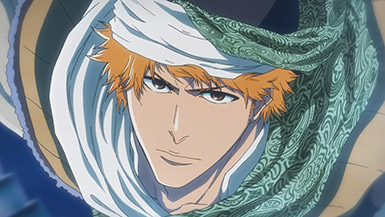 |
 |
 |
 |
 |
 |
 |
 |
 |
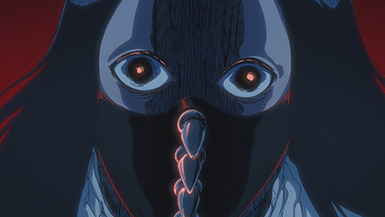 |
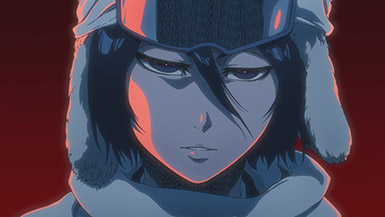 |
 |
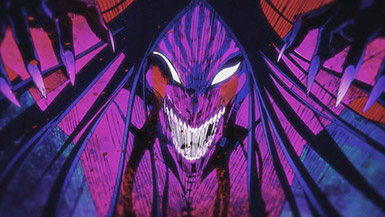 |
 |
 |
 |
 |
 |
 |
 |
 |
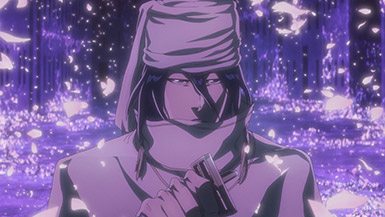 |
 |
 |
 |
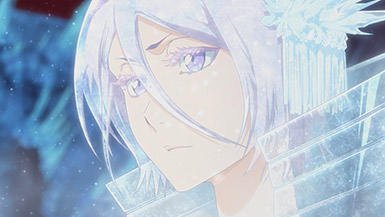 |
 |
 |
 |
 |
 |
 |
 |
 |
「The White Haze」
Bleach: Sennen Kessen-hen – Ketsubetsu-tan gives Rukia the raw deal when she has to fight As Nodt, who whips himself into a jolly mood when he realizes her brother is the Soul Reaper he stole a Bankai from. But for all of the efforts Rukia makes to avoid Nodt’s fear toxin abilities, it takes an appearance from Byakuya to allow her to channel Sode no Shirayuki’s latent power.
THE FEAR
Rukia really drew the short straw with this one. When she split away from Renji, he got to fight the goofy wrestler while she stumbled right into the guy who scares people. Renji gets to watch Mask destroy his own healers, and Rukia gets to hallucinate her friends rotting from the inside out as she’s submerged in flies. I’d be so pissed if I had to hear Renji talk about how much of a cakewalk his fight was after I had to watch my opponent turn into a giant melting corpse.
I’m having too much fun with this because As Nodt was a genuinely freaky antagonist, and a major step-up from some of the more normal folks that Yhwach roped into his team. Through his ability to project his own fears onto others until they go mad, it produced some of the freakiest imagery I’ve seen in Bleach. Everything from Nodt’s ghastly appearance to the fly swarms and Rukia’s friends decaying was haunting, and it made me very impressed with Bleach’s foray into disturbing territory.
THE CONSEQUENCE OF SOUND
With that in mind, it does feel like Nodt’s abilities tapped into some of the modern rock influence that’s all over the series. Yes, it’s hard to look at the imagery in Nodt’s abilities and not think about the visual influences from Kubo’s taste in music, namely in the character themes he’s selected for them.
His characters’ themes help contextualize how he sees many of his characters, but also paints the kind of atmosphere he wants to portray through them. Bleach often embraced skate punk, alt rock, and British groups for its approachable characters, and reserves many of eclectic songs he enjoys towards his quirkier characters. This might be in the form of giving the cuter characters some sentimental love songs or giving his schemers some classical music to chew on.
For his morally gray or outright vile characters, however, they’re given something with a little added intensity. The Kurotsuchi’s, for instance, have Marilyn Manson songs as their character themes, a performer I was immediately reminded of with the kind of shock horror imagery Nodt embraced. Many of the arrancars were either given contemporary alt music or intense hard rock depending on who we’re talking about.
From what I’m finding with the visuals behind Nodt’s powers, it feels like a nu-metal twist on Utagawa Kuniyoshi’s “Takiyasha the Witch and the Skeleton Spectre”. He wouldn’t feel dramatically out-of-place in a music video for the industrial metal or shock rock of the 90s. But it also makes me curious about how threatening or fear-inducing some of the other Sternritters would be.
ICE AGE COMING, ICE AGE COMING
Nodt being a facsimile of 90s industrial metal is merely a friendly reminder of the audiovisual indicators as to how Kubo defines the series’ Quincies. Given how Kubo chose “Idiotique” by Radiohead as Uryu’s character theme, I’m having the impression that the Quincies are meant to have an otherworldly yet ominous presence in the series.
Although the song’s dissonance could be applied to characters like Nodt who weaponize their paranoia after they’ve experienced the hopelessness of nearly dying, it resonates the most with Uryu as someone aiming to validate their existence in a dying world. That particular Radiohead song leans into an intense, electronic sound that leans into the unnerving paranoia of an uncontrollable future. Earlier in the series, it could’ve feasibly been seen as Uryu learning to trust Ichigo after years of self-preservation have made him grow skeptical of Soul Reapers trying to befriend Quincies.
But what first appeared to be a glimpse into Uryu’s sophisticated, introspective mindset takes on an entirely different meaning when Uryu is starting to learn that Yhwach represents the creation of an uncontrollable weapon under the false pretense of a Quincy resurgence. The violent electronic snaps and foreboding ambience capture how Uryu has been left to both confront his mortality and search for reasons to persevere in spite of constantly finding new reasons to distrust the people around him.
I imagine I’ll return to this train of thought once Uryu-specific episodes start rolling out. But while I was thinking about the musical influences behind Nodt’s horror imagery, I couldn’t help but reflect on the role that character themes play in shaping how the Quincies are seen. I don’t think Kubo’s updated the list of themes for characters past the Hueco Mundo arc, but I wouldn’t be surprised to see more eclectic genres like industrial, trip-hop or electronica for many of the Sternritters.
PROGRESS!
Before I went on my music tangent, I wanted to discuss Byakuya and Rukia’s relationship, and how fascinating it is to see it develop here with only knowledge of everything up to the Xcution arc to go off of. I was obsessed with Rukia while I was growing up, so I was invested in her backstory and her bonds with Renji and Byakuya. But through this, Byakuya wasn’t depicted as a flattering person towards his foster sister earlier on.
To Byakuya, Rukia had just been an obligation due to his late wife Hisana’s wish to take in her long lost sister as his own. The cold distance he gave to her could only be initially seen as a careless disregard for her well-being, making it all the easier for Byakuya to potentially execute Rukia for any transgressions. It wasn’t until he fought Ichigo when he had an epiphany that Rukia is a warm reminder of the familial bonds he had with her sister, allowing him to finally shed the burden of adhering to his duty if it meant deliberately severing his family ties.
From then on, there was a slow, steady process on Byakuya’s behalf to repair their relationship, and they had become relatively dependable to one another. With all this in mind, it was very heart-warming to see how far they’d come when Byakuya took it upon himself to help Rukia gain better control over Sode no Shirayuki. By coaching her on how to retain control of her Bankai without losing control of it, it shows how compassionate Byakuya had become and how willing he is to share his experiences with Rukia if it means helping her become a formidable warrior.
On top of this, the pride that Byakuya had in seeing Rukia make the most of his teaching skills and retain full control of herself throughout the fight was so adorable, especially with Rukia’s reaction towards the first time Byakuya had given her heartfelt praise. Compared to how things were in the first couple seasons, it’s a surreal yet welcome change of pace to see Byakuya comfortable in expressing his appreciation for Rukia and take the time to make sure that she’s able to be the best version of herself.

Ice queen Rukia was so beautiful, and it really made me wish she’d had more opportunities to flex her skills throughout the series.
Agreed. Rukia doesn’t get enough credit.